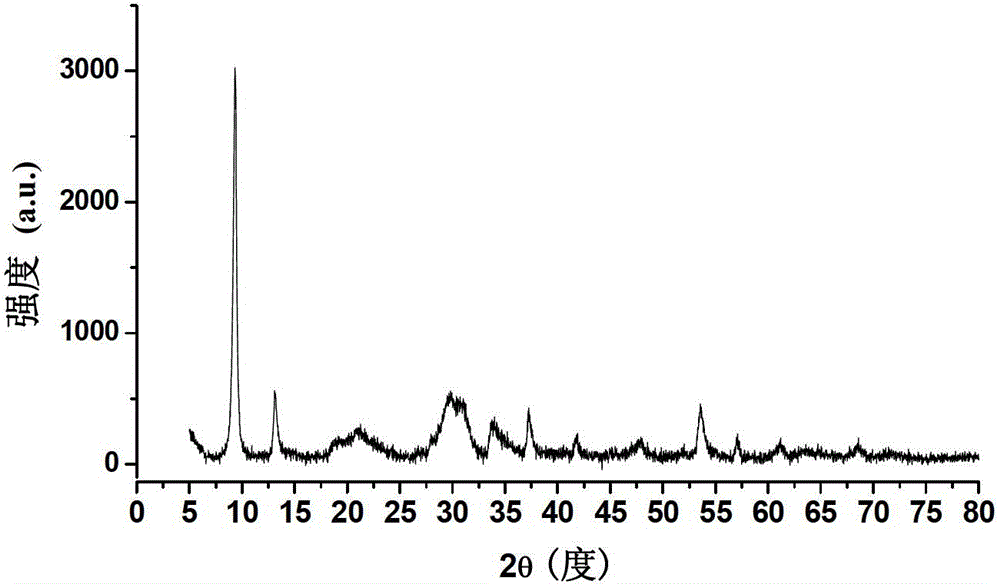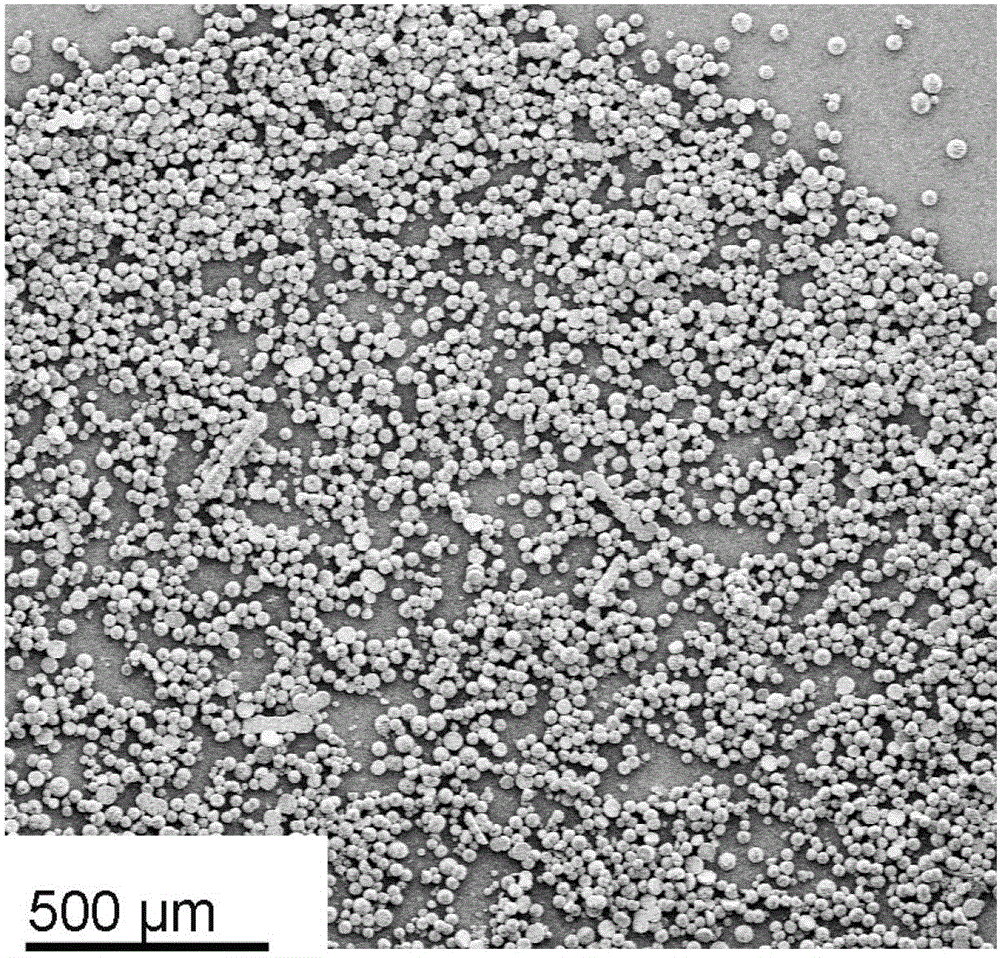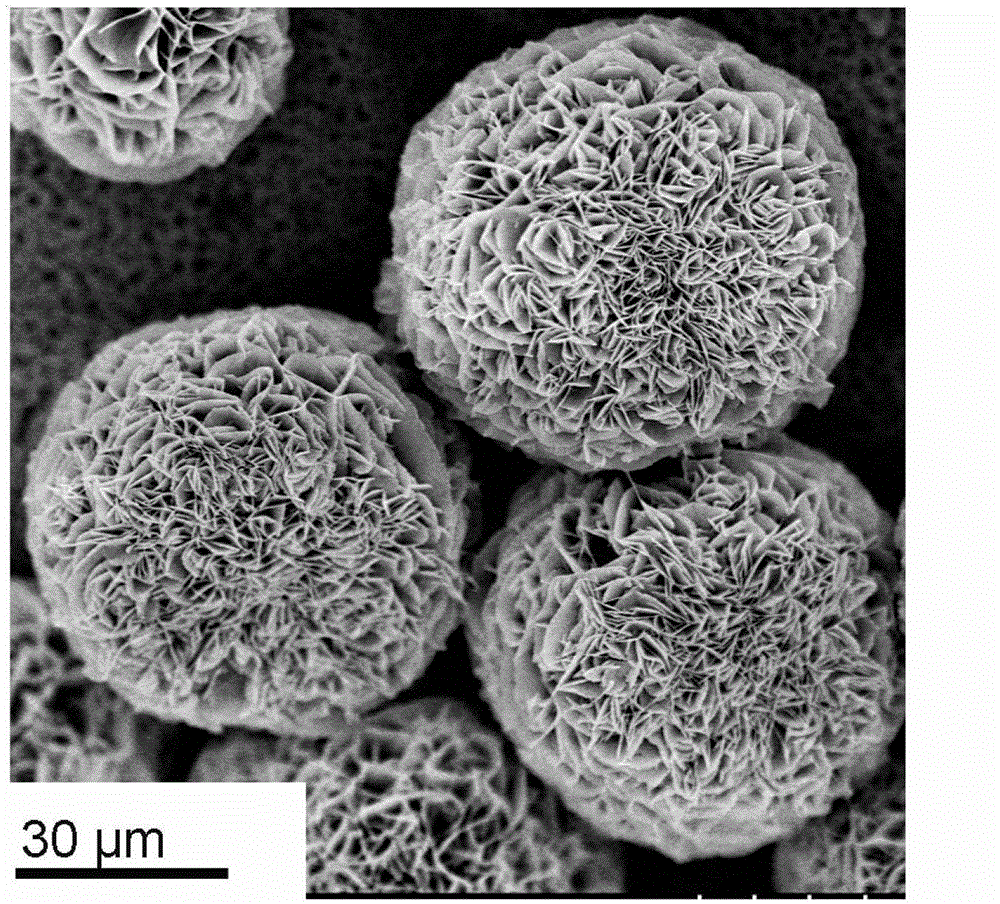Preparation method for nano-material used for detection of glucose
A technology of nanomaterials and glucose, which is applied in material analysis by observing the influence of chemical indicators, analysis by making materials undergo chemical reactions, color/spectral characteristic measurement, etc., can solve the problems of easy inactivation, degradation, and easy decomposition , Hydrogen peroxide instability and other problems, to improve the signal strength and detection sensitivity, simplify the experimental operation steps, avoid the effect of diffusion and decomposition
- Summary
- Abstract
- Description
- Claims
- Application Information
AI Technical Summary
Problems solved by technology
Method used
Image
Examples
Embodiment 1
[0024] (1) Prepare a 120 mM copper sulfate aqueous solution using an analytical balance and a volumetric flask.
[0025] (2) Weigh 1 mg of glucose oxidase (GOx) derived from Aspergillus niger and 1 mg of peroxidase (HRP) derived from horseradish, and add them to 150 mM phosphate buffer solution (PBS, pH=7). The bottle was adjusted to 10 mL to obtain a PBS solution containing 0.5 mg / mL GOx and 0.1 mg / mL HRP.
[0026] (3) Add 20 μL of 120 mM copper sulfate solution to 3 mL of PBS solution containing 0.5 mg / mL GOx and 0.1 mg / mL HRP, mix the solution well, and place it at room temperature for 3 days. The resulting precipitated substance is GOx&HRP–Cu 3 (PO 4 ) 2 ·3H 2 O Nanoflower.
Embodiment 2
[0028] (1) Use an analytical balance and a volumetric flask to prepare a 100 mM ferric chloride aqueous solution.
[0029] (2) Weigh 5 mg of glucose oxidase (GOx) from Aspergillus niger and 1 mg of soybean peroxidase (HRP), add them to 200 mM phosphate buffer solution (PBS, pH=7), use a volumetric flask Dilute to 10 mL to obtain a PBS solution containing 0.5 mg / mL GOx and 0.1 mg / mL HRP.
[0030] (3) Add 15 μL of 120 mM copper sulfate solution to 3 mL of PBS solution containing 0.5 mg / mL GOx and 0.1 mg / mL HRP, mix the solution well, and place it at room temperature for 3 days. The resulting precipitated substance is the nanoflower.
Embodiment 3
[0032] (1) Prepare a 150 mM calcium chloride aqueous solution using an analytical balance and a volumetric flask.
[0033] (2) Weigh 1mg of glucose oxidase (GOx) from Penicillium and 2mg of peroxidase (HRP) from black tube fungus, add to 250mM phosphate buffer solution (PBS, pH=7), use The volumetric flask was adjusted to 10 mL to obtain a PBS solution containing 0.5 mg / mL GOx and 0.1 mg / mL HRP.
[0034] (3) Add 60 μL of 120 mM copper sulfate solution into 3 mL of PBS solution containing 0.5 mg / mL GOx and 0.1 mg / mL HRP. The solution was mixed well and left at room temperature for 3 days. The resulting precipitated substance is the nanoflower.
PUM
 Login to View More
Login to View More Abstract
Description
Claims
Application Information
 Login to View More
Login to View More - R&D
- Intellectual Property
- Life Sciences
- Materials
- Tech Scout
- Unparalleled Data Quality
- Higher Quality Content
- 60% Fewer Hallucinations
Browse by: Latest US Patents, China's latest patents, Technical Efficacy Thesaurus, Application Domain, Technology Topic, Popular Technical Reports.
© 2025 PatSnap. All rights reserved.Legal|Privacy policy|Modern Slavery Act Transparency Statement|Sitemap|About US| Contact US: help@patsnap.com



